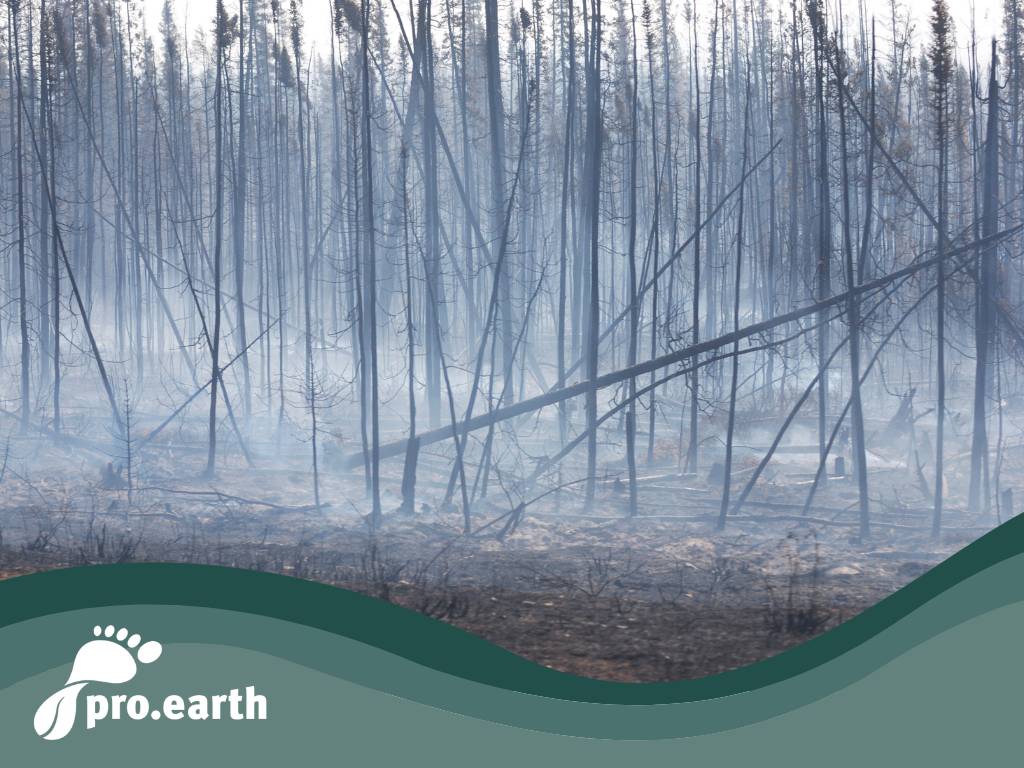The resilience of forests and the risk of forest fires

The forests are burning again at the moment. Around Montreal, for example, where the air quality is worse than anywhere else in the world as a result - and that's saying something. Or in Jüterbog, south of Berlin, where over 600 hectares have burned down in a very short space of time. The vast majority of forest fires are caused by conscious or unconscious human activity. The drought of the last few years and the fact that most of them are so-called plantations fuel the forest fires.
Real, healthy mixed forests and primeval forests hardly ever burn, says forester and author Peter Wohlleben in an interview with watson. "By nature, we would have primeval beech forests and these natural forests would not burn because they are very moist. So it's mainly a problem of plantations in combination with clear-cutting and in the vast majority of cases - with arson," he says about the problem.
Not all forests are the same
The majority of our forest areas are so-called "forests" or "plantations": Man-made forest areas where one type of tree usually grows, which are all the same age and often stand in rows. In Austria, these are mostly spruce monocultures, in Germany (for example in Brandenburg) they are often pine monocultures without suitable undergrowth and without thick deadwood, because all the "dead" trunks are removed.
A "forest", on the other hand, is a self-regulating system with trees of different ages and species with a specific undergrowth of mosses and the like and lots of dead wood, usually thick trunks that store lots of water. That's the difference in a few words.
The problems of today's forests
"In fact, there are worrying projections for the increase in "fire weather". The risk is increasing as the climate crisis progresses. Prolonged droughts in combination with heatwaves are particularly problematic, partly because the vegetation is then depleted of water, weakened and therefore more flammable," emphasizes Pierre Ibisch, biologist and professor of nature conservation at the Eberswalde University for Sustainable Development, in an interview with tagesschau.
Pine monocultures in particular are burning like tinder. Forest expert Wohlleben told watson: "I assume that it is mainly pine stands that are burning in Jüterbog. It's always the same: conifer plantations burn like a fuel depot. These easily flammable conifers, which were originally native to cooler, more northerly regions, are simply the purest fire accelerators here in relative heat and drought. And if you want to do something in the long term, you should simply ban the cultivation of these types of trees."
Added to this is the highly flammable coniferous litter and the lack of a herbaceous and shrub layer, as well as thick deadwood that soaks up water like a sponge. "In addition, conifers such as pines, spruces and Douglas firs have a very unfavorable effect on the soil, humus formation and soil organisms. As a result, the ability to store water is less pronounced. ", explains forest expert Pierre Ibisch in an interview with tagesschau. He is head of the long-term research experiment "Pyrophob", where scientists are investigating "what makes forests more resistant to forest fires, heat and drought."
Many "forests" in Central Europe are actually plantations, and in Germany this applies to around 50% of "forests". Coniferous monocultures that are all the same age because they were reforested after clear-cutting. These plantations are around 8 degrees warmer than primeval beech forests, according to Wohlleben. "We are manipulating the forest too much, that's the point. If you clear these dying spruce plantations, the soil gets even hotter in the summer sun and dries out even more easily. And forest fires can start particularly easily on these clear-cuts."
Fires contribute massively to CO2 emissions
According to Greenpeace, global fires, including forest, savannah, peat bog and agricultural fires, cause global CO2 emissions of 7.3 billion tons per year. Added to this are large quantities of climate-impacting pollutants such as methane and soot, which contribute significantly to the climate crisis. Overall, fires cause more emissions worldwide than global traffic. This corresponds to almost 50 percent of global emissions from coal combustion and massively fuels climate change.
What measures protect forests from the risk of forest fires?
-
- Prohibit clear-cutting
- Establishment of a mixed forest with native deciduous forest species such as beech, oak, maple, etc. These do not burn when alive - in contrast to pine trees. They cool down the landscape in contrast to the pine plantations which have a drying effect.
- A mixed-age forest structure with grandparent, parent and child generations
- More deadwood in the forest helps to store moisture on the ground. Lying deadwood does not burn well.
- Forests, forest edges and firebreaks need vegetation that keeps out fire.
- Pine monocultures must disappear from our landscape
A forest fire also offers an opportunity
- In addition to all the negative effects, the destruction of the plantations by the fires also has a positive aspect: there is an opportunity for a healthy native mixed deciduous forest to form on the scorched earth - without any planting and without any costs. In Peter Wohlleben's closing words: "There are research projects on this, for example in Treuenbrietzen, where you can see that the forest comes back surprisingly quickly after a forest fire. A forest fire is a tragedy, no question about it. That's why we should do everything we can to prevent it. But if you draw the right conclusions from it, it can also be an opportunity to finally restore natural forest ecosystems."
Further links:
Interview with Peter Wohlleben






